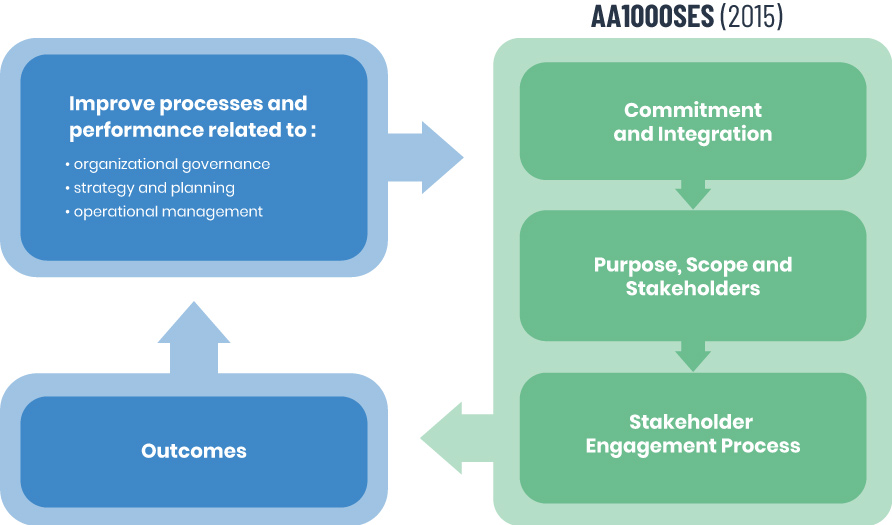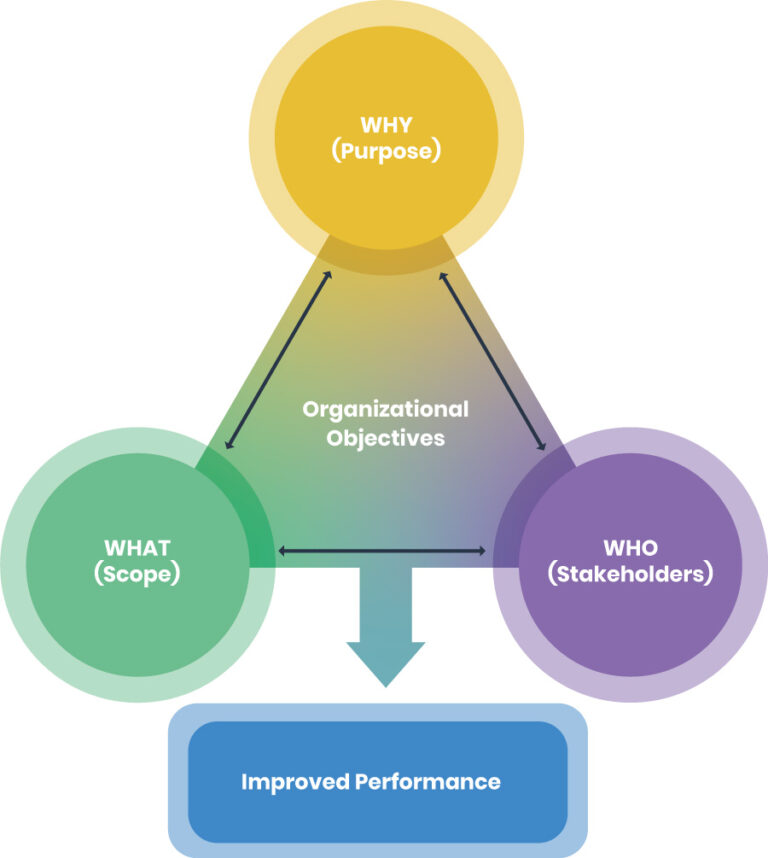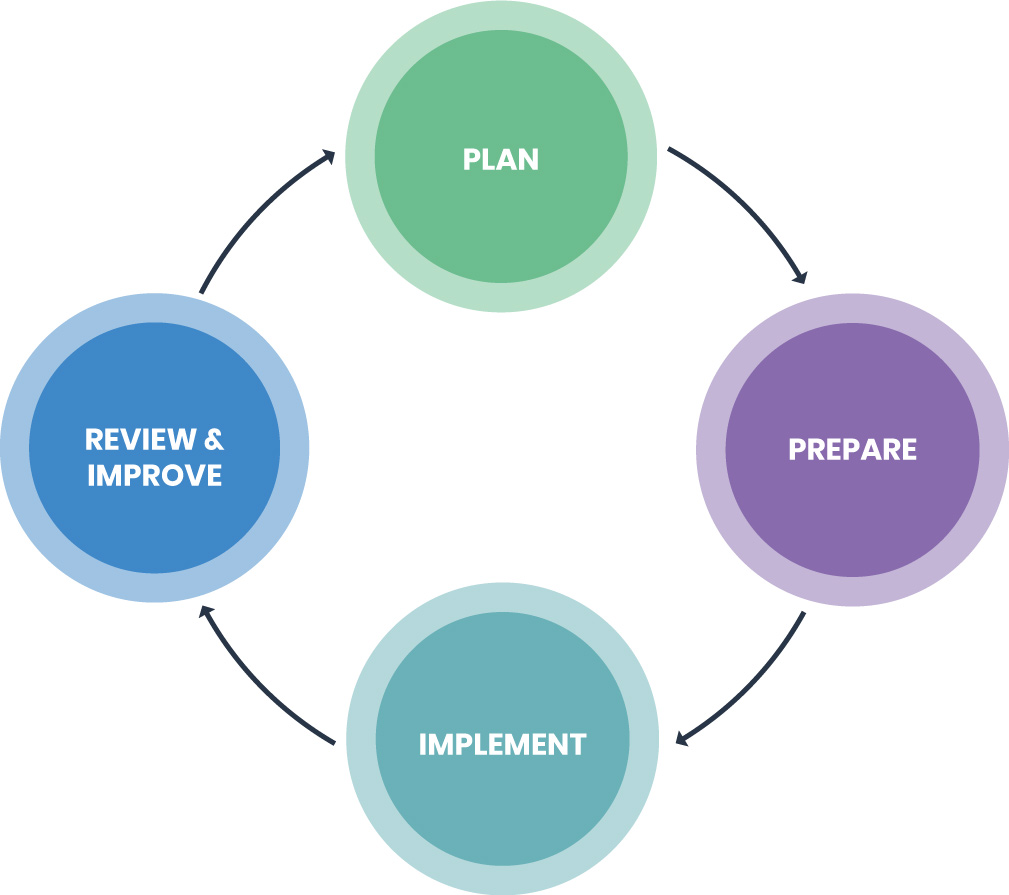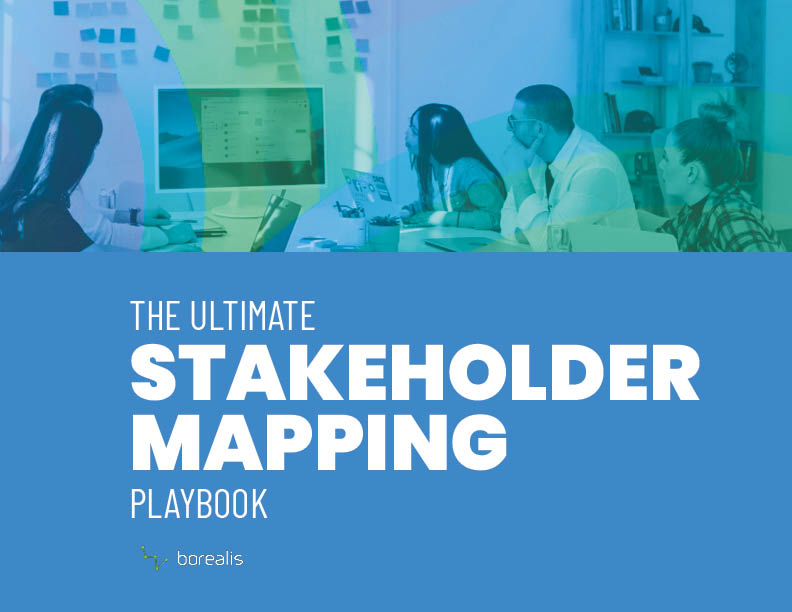For businesses that seek to build trusted relationships, stakeholder engagement is a never-ending cycle. To improve outcomes, strategies and processes must be continually refined over time. Fortunately, organizations can turn to a number of frameworks and best practices to guide their efforts. One such framework is the AA1000 Stakeholder Engagement Standard (SES) 2015.
What is the AA1000 Stakeholder Engagement Standard?
AA1000 was developed by AccountAbility, a global consulting and standards firm that helps organizations address environmental, social, and governance (ESG) challenges to promote responsible business practices and improve performance.
AA1000 SES is a freely available, globally recognized standard that defines a series of requirements and best practices for high-quality stakeholder engagement. It is the most widely adopted stakeholder engagement standard worldwide.
According to AccountAbility, AA1000 SES:
- Provides a simple, relevant, and practical framework to implement high-quality stakeholder engagement.
- Outlines how to rethink an organization’s approach to engagement by empowering stakeholders as active contributors to value creation.
- Describes how to integrate stakeholder engagement with an organization’s governance, strategy, and operations.
For complete details, you can download the AA1000 SES here.
Who is the AA1000 standard intended for?
AA1000 SES is written for stakeholder engagement professionals, (e.g., those working in community engagement, public affairs, government relations, land and asset management, environment and social performance, etc.), but it benefits everyone involved in the engagement process.
AA1000 is meant to be used by organizations of any size, in any country, and any industry – it’s not just for large organizations or businesses!
The AA1000 standard can be applied to all types of stakeholder engagement: public or private, internal or external, project-based or ongoing.
Why should organizations adhere to the AA1000 SES?
Stakeholder engagement is essential to an organization’s success. Listening and responding to stakeholders promotes accountability and improves performance. But for stakeholder engagement to be effective it must be done strategically, for a clear purpose, to achieve specific outcomes.
The AA1000 standard takes guesswork out of the process. It helps organizations bypass the initial ‘trial and error’ phase as they figure out what works and what doesn’t. AA1000 SES provides simple guidelines to help organizations craft and implement a high-quality stakeholder engagement process that is based on established best practices.
Benefits of quality stakeholder engagement
High-quality stakeholder engagement can help an organization:
- Build transparent, trust-based relationships with stakeholders.
- Manage risk more effectively to safeguard reputation.
- Learn from stakeholders, to promote innovation and achieve better outcomes.
- See the bigger picture to better understand complex situations and cultural dynamics.
- Create more equitable and sustainable social development by giving affected parties a voice at the table.
- Pool resources to solve problems or achieve goals that couldn’t otherwise be met.
- Educate and inform stakeholders, to influence their choices and actions.
- More easily identify (and report on) material issues.
- Secure social license to operate.
Implementing the AA1000 Stakeholder Engagement Standard
AA1000 SES provides guidance to help organizations integrate the standard into their core processes, define the criteria for stakeholder engagement, and establish an effective engagement process.

The outcomes of the stakeholder engagement process should be meaningful to the people involved, and must be communicated transparently. The organization should review these engagement outcomes and use the information to revise their processes for better performance.
Getting started with AA1000
The 3 principles of accountability
The AA1000 Stakeholder Engagement Standard recognizes 3 key principles of accountability: inclusivity, materiality, and responsiveness. Together, these principles form the foundation for AA1000 SES and the series of AA1000 Standards.
Accountability Principles
- Inclusivity – people should have a say in the decisions that impact on them.
- Materiality – decision makers should identify and be clear about the issues that matter.
- Responsiveness – organizations should act transparently on material issues.
Inclusivity
Inclusive organisations hold themselves accountable to their stakeholders and actively seek their stakeholders’ participation at all levels to achieve better outcomes.
Inclusive stakeholder engagement considers the needs of everyone involved. In some cases, this may require interventions to remove cultural, social, political, or communication barriers that prevent people from participating meaningfully.
Inclusivity helps the organization understand diverse perspectives to establish a global view of the issues, which helps to determine materiality.
Materiality
Material issues are those that are most relevant and significant. Assessing materiality helps identify the issues which will have the greatest impact on the decisions, actions, and performance of the organization or its stakeholders. While different issues will be material to different stakeholders, the organization must weigh these competing interests and prioritize them accordingly.
AA1000 advises organizations to clearly identify the issues that matter most, and report openly to stakeholders about their performance on them.
Materiality helps to determine responsiveness, as material issues will compete for limited resources.
Responsiveness
Responsiveness is how an organization responds to issues. This can be evaluated through their decisions, actions, performance, and communications with stakeholders.
Organizations should act transparently on material issues and develop innovative, sustainable responses to address challenges that matter – not just now, but in the future.
Integrating AA1000 into core operations
Stakeholder engagement isn’t a stand-alone process. To be effective, AA1000 contends that stakeholder engagement should be fully integrated into an organization’s fundamental processes and culture. By doing so, engagement outcomes can be used to inform the decision-making process and improve strategic and operational outcomes.
AA1000 SES includes a number of recommendations to help organizations integrate stakeholder engagement into their governance, strategy and operations.
The AA1000 standard can also be used to support the stakeholder engagement requirements of many other standards, including the Global Reporting Initiative G4 and the ISO 26000 guidance on social responsibility.
Defining the stakeholder engagement process

Purpose – Why is the organization engaging with stakeholders?
Before engagement begins, it’s important to think about why you need to engage and what you hope to achieve.
The purpose for engagement may be related to ongoing activities or focused on a specific project. An organization might need to address operational issues or determine which course of action will be most acceptable to the people who will be affected. In any case, building trust-based relationships with your stakeholders is essential.
AA1000 asserts that the purpose of engagement should be connected to the organization’s overall strategy. This purpose should be revised as needed, based on stakeholder feedback.
Scope – What issues should the organization engage on?
To determine the scope of engagement, you will need to define which material issues are relevant to your purpose. Which parts of the organization need to be involved? Does the purpose of the engagement affect the organization as a whole, or is it limited to a single region, activity, product, or team? Do you need to engage with stakeholders about a current issue, long-term concerns, or both?
As with the purpose of engagement, AA1000 recommends that you review the scope of engagement periodically and adjust your strategy if necessary, based on input from your stakeholders.
Stakeholders – Who needs to be involved in this engagement?
The organization must carefully identify the stakeholders (individuals, groups and organizations) that are relevant to their purpose and scope. A thorough stakeholder analysis is an excellent place to begin. After stakeholders have been identified and analyzed, stakeholder mapping can help teams identify key stakeholders based on their levels of interest and influence in order to engage more effectively.
Creating a successful stakeholder engagement process
Once the purpose, scope, and stakeholders have been identified, organizations need to put a solid stakeholder engagement process into place.
Requirements for quality stakeholder engagement
According to the AA1000 standard, quality stakeholder engagement must:
- Be based on a commitment to the AccountAbility Principles (AA1000APS)
- Clearly define the issues to engage on
- Establish a decision-making process
- Focus on issues material to the organization and/or its stakeholders
- Create opportunities for dialogue
- Be integral to organizational governance
- Be transparent, timely, flexible and responsive
- Have a process appropriate for the stakeholders being engaged
- Add value both for the organization and its stakeholders
The 4-stage engagement process advocated by AA1000
AA1000 SES recommends a 4-stage engagement process, which can be tailored to the specific needs of your organization or project.

1. PLAN
- Profile and map stakeholders
- Determine engagement levels and methods
- Establish and communicate boundaries of disclosure
- Draft engagement plan
- Establish indicators
2. PREPARE
- Mobilize resources
- Build capacity
- Identify and prepare for engagement risks
3. IMPLEMENT THE ENGAGEMENT PLAN
- Invite stakeholders to engage
- Brief stakeholders
- Engage
- Document the engagement and its outputs
- Develop an action plan
- Communicate engagement outputs and action plan
4. REVIEW AND IMPROVE
- Monitor and evaluate the engagement
- Learn and improve
- Develop and follow up on action plan
- Report on engagement
Each stage in this process can be greatly simplified with stakeholder management software, which allows teams to plan, engage, and measure all stakeholder engagement activities from a single platform.

Find out how stakeholder mapping can help you target the right people, with the right message, at the right time.
Stakeholder engagement is an ongoing cycle, but businesses can take simple steps to improve their processes along the way. Adopting best practices, adhering to globally recognized standards like AA1000 SES, and implementing fit-for-purpose stakeholder relationship management tools will help teams build stronger, more productive relationships – and achieve better outcomes.
About Borealis
Borealis Stakeholder Engagement Software is used by organizations worldwide to secure social acceptance, demonstrate corporate social responsibility, and consider the impacts of stakeholders on their core business activities.
Want to see how Borealis software can help you achieve better engagement outcomes? Talk to an expert.





